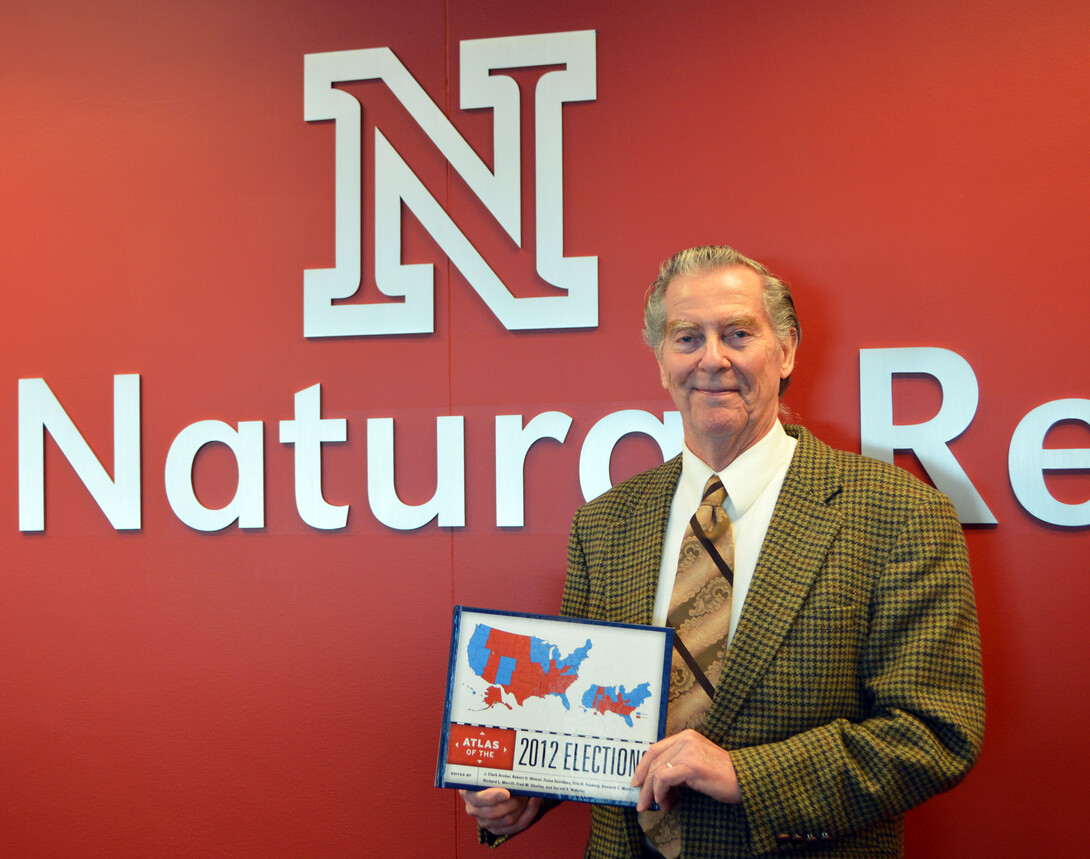
A reception celebrating the publication of “Atlas of the 2012 Elections” is 2-3 p.m. April 29 in the Hardin Hall lobby.
The reception is free and open to the public, and copies of the atlas will be available for purchase. Author and professor of geography J. Clark Archer will be present for book signings. Refreshments will be provided.
“I’ve been writing about elections for 35 years,” Archer said. “Elections are an empirical researcher’s dream because there’s just an enormous amount of data, and the data become available fairly frequently.”
Archer’s “Historical Atlas of U.S. Presidential Elections, 1788-2004” was named best single-volume reference in humanities and social sciences for 2006 by the Professional and Scholarly Publishing Division of the Association of American Publishers, and was on the Library Journal’s Best Reference List for 2006. His “Atlas of American Politics, 1960-2000” was named Choice Magazine’s outstanding academic title for 2003 by the Association of College and Research Libraries.
Archer’s latest publication, “Atlas of the 2012 Elections,” employs a geographical perspective to analyze virtually every aspect of the 2012 U.S. presidential election, in addition to selected state and local elections.
Of the atlas’ 40 contributors, six earned doctoral degrees in geography from UNL.
The contributors provide a comprehensive and detailed assessment of many election issues and results including presidential primaries; newspaper endorsements and campaign stops; the results of the presidential election at regional and national levels; and key voting patterns by race and ethnicity, religion, occupational groups, age and poverty.
Moving beyond the national race, the atlas examines important senatorial and gubernatorial races and considers selected state referenda including the marijuana legalization votes in Colorado and Washington and same-sex marriage referenda in Maryland, Washington, Colorado and Minnesota. The voting patterns identified in 2012 elections are also compared to earlier contests to provide political and geographic context over time.
“These things fit together pretty nicely because there’s a lot of numerical data, a lot of locational and geographical patterns, and various kinds of statistics that can be applied to try and extract information,” Archer said.







